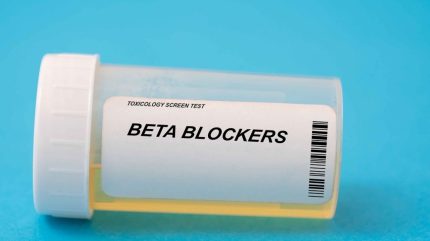Request Demo
Last update 08 May 2025
Ventricular Septal Rupture
Last update 08 May 2025
Basic Info
Synonyms Interventricular septal rupture, Interventricular septum rupture, Rupture of interventricular septum + [16] |
Introduction Laceration or tearing of the VENTRICULAR SEPTUM, usually caused by MYOCARDIAL INFARCTION. |
Related
6
Clinical Trials associated with Ventricular Septal RuptureDRKS00035563
Myocardial Infarction-related Acute Mechanical ComplIcations: results from an international retrospective cohort study - MIAMI retro
Start Date27 Mar 2024 |
Sponsor / Collaborator |
ChiCTR2300071124
An prospective cohort registry study of patients with ventricular septal rupture after myocardial infarction
Start Date01 Jun 2023 |
Sponsor / Collaborator- |
ChiCTR2300071127
A retrospective, observational and multi-center study of patients with postinfarction ventricular septal rupture
Start Date08 May 2023 |
Sponsor / Collaborator- |
100 Clinical Results associated with Ventricular Septal Rupture
Login to view more data
100 Translational Medicine associated with Ventricular Septal Rupture
Login to view more data
0 Patents (Medical) associated with Ventricular Septal Rupture
Login to view more data
2,072
Literatures (Medical) associated with Ventricular Septal Rupture01 May 2025·General Thoracic and Cardiovascular Surgery
Embankment technique in extended sandwich patch repair for post-infarction ventricular septal rupture
Article
Author: Tateishi, Retsu ; Nishigawa, Kosaku ; Kanemura, Takeyuki ; Ono, Shunya
01 Apr 2025·Canadian Journal of Cardiology
Occlusion of ventricular septal rupture with an Amulet left appendage atrial occluder.
Article
Author: Grinberg, Daniel ; Fort, Justine ; Issa, Ranny ; Dérimay, François ; Si-Mohamed, Salim ; Rioufol, Gilles
01 Apr 2025·JACC: Case Reports
Untangling Mechanical Complications of Acute Myocardial Infarction
Article
Author: Vásquez-Rodríguez, Juan Felipe ; Ariza-Ordoñez, Nicolas ; Manzur-Barbur, María Carolina ; Meza-González, Yilmar Alexander ; Rodríguez-González, María Juliana ; Ochoa-Díaz, Andrés Felipe
1
News (Medical) associated with Ventricular Septal Rupture03 Sep 2024
At the ESC Congress, Dr. Milton Packer highlighted recent research into beta blocker treatment for myocardial infarction. Credit: luchschenF via Shutterstock.
A shift in the beta-blocker treatment paradigm has arrived with the changing myocardial infarction treatment landscape, said a researcher at the European Society of Cardiology (ESC) Congress, held from 31 August to 2 September.
Over the past 40 years, the research space has operated on an understanding that immediate inhibition by beta-blockers reduces left ventricular rupture, and further
myocardial infarction
, said Dr. Milton Packer, distinguished scholar in cardiovascular science at Baylor University Medical Center, Dallas. Additionally, the belief was that delayed long-term blockade can lead to left ventricular dysfunction, he said.
Beta-blockers are a class of drugs that act by inhibiting the actions of hormones such as adrenaline to slow down the heart. Commonly used beta blockers include
Abbott
’s Tenormin (atenolol), MSD’s Cardicor (bisoprolol), and
GSK
’s Trandate (labetalol).
However, Packer explained that the beta blocker response has changed as percutaneous interventions, reperfusion therapies, antiplatelet drugs and more have entered the treatment landscape for myocardial infarction.
At the ongoing
ESC Congress
talk titled “Should we give beta blockers post-myocardial infarction?” Packer said that questions have been raised surrounding the use of the drugs in patients with myocardial infarction and preserved ejection fraction, referencing the Phase IIII REDUCE-AMI study (NCT03278509).
See Also:
Novavax wins FDA emergency approval for updated Covid-19 vaccine
Combating Pharmaceutical Crime with On-Dose Authentication
REDUCE-AMI, which was funded by the Swedish Research Council, tested the use of beta-blockers after myocardial infarction and preserved ejection fraction. The study found that for patients with acute myocardial infarction who underwent early coronary angiography and had preserved left ventricular ejection fraction, long-term beta-blocker treatment did not lower the risk of death from any cause or new myocardial infarctions compared to no beta-blocker use.
Despite the conclusion of the REDUCE-AMI study, Packer highlighted the fact that researchers have only investigated and proven the effectiveness of non-selective beta blockers in post-myocardial infarction trials, so further research is required. He added that physicians will have to take into account the degree of beta-blockade in future treatment regimens.

VaccinePhase 3Drug ApprovalClinical Result
Analysis
Perform a panoramic analysis of this field.
login
or

AI Agents Built for Biopharma Breakthroughs
Accelerate discovery. Empower decisions. Transform outcomes.
Get started for free today!
Accelerate Strategic R&D decision making with Synapse, PatSnap’s AI-powered Connected Innovation Intelligence Platform Built for Life Sciences Professionals.
Start your data trial now!
Synapse data is also accessible to external entities via APIs or data packages. Empower better decisions with the latest in pharmaceutical intelligence.
Bio
Bio Sequences Search & Analysis
Sign up for free
Chemical
Chemical Structures Search & Analysis
Sign up for free